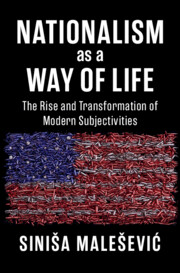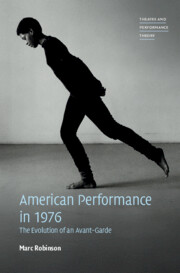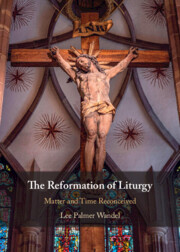Refine search
Actions for selected content:
3388592 results

Law and Morality in Kant
- Coming soon
-
- Expected online publication date:
- December 2025
- Print publication:
- 31 December 2025
-
- Book
- Export citation

Disenchanting the Senses
- Sulfuric Discourse and the World System
- Coming soon
-
- Expected online publication date:
- December 2025
- Print publication:
- 31 December 2025
-
- Element
- Export citation
Death and the Afterlife in Syriac Christianity
- Creating Social Identity and Emotional Communities
- Coming soon
-
- Expected online publication date:
- December 2025
- Print publication:
- 31 December 2025
-
- Book
- Export citation

Catalytic Capital
- Unleashing Philanthropy for Systems Change
- Coming soon
-
- Expected online publication date:
- December 2025
- Print publication:
- 31 December 2025
-
- Book
- Export citation
The Political Psychology of Citizens in Rising China
- Coming soon
-
- Expected online publication date:
- December 2025
- Print publication:
- 31 December 2025
-
- Book
- Export citation

Securing Democracies
- Defending Against Cyber Attacks and Disinformation in the Digital Age
- Coming soon
-
- Expected online publication date:
- December 2025
- Print publication:
- 31 December 2025
-
- Book
- Export citation

Protecting Women
- US Army Culture in the Second US–Seminole War and the US–Mexican War
- Coming soon
-
- Expected online publication date:
- December 2025
- Print publication:
- 31 December 2025
-
- Book
- Export citation

Personal Religion in the Ancient Greek World
- A Cultural History
- Coming soon
-
- Expected online publication date:
- December 2025
- Print publication:
- 31 January 2026
-
- Book
- Export citation

Nationalism as a Way of Life
- The Rise and Transformation of Modern Subjectivities
- Coming soon
-
- Expected online publication date:
- December 2025
- Print publication:
- 11 December 2025
-
- Book
- Export citation

Economic Sanctions from Havana to Baghdad
- Legitimacy, Accountability, and Humanitarian Consequences
- Coming soon
-
- Expected online publication date:
- December 2025
- Print publication:
- 31 December 2025
-
- Book
- Export citation
Digitalisation, New Technologies and International Investment Law
- Coming soon
-
- Expected online publication date:
- December 2025
- Print publication:
- 31 December 2025
-
- Book
- Export citation

Trademarks and Free Speech
- Conflicts and Resolutions
- Coming soon
-
- Expected online publication date:
- December 2025
- Print publication:
- 31 December 2025
-
- Book
- Export citation

Elements of Structural Equation Models (SEMs)
- Coming soon
-
- Expected online publication date:
- December 2025
- Print publication:
- 31 December 2025
-
- Book
- Export citation
Modal Sentences
- Coming soon
-
- Expected online publication date:
- December 2025
- Print publication:
- 31 December 2025
-
- Book
- Export citation

The New Immigration Challenge
- A Psychological Exploration Toward Solutions
- Coming soon
-
- Expected online publication date:
- December 2025
- Print publication:
- 31 October 2025
-
- Book
- Export citation

Climate Economics and Finance
- Coming soon
-
- Expected online publication date:
- December 2025
- Print publication:
- 31 December 2025
-
- Book
- Export citation

American Performance in 1976
- The Evolution of an Avant-Garde
- Coming soon
-
- Expected online publication date:
- December 2025
- Print publication:
- 31 December 2025
-
- Book
- Export citation

The Reformation of Liturgy
- Matter and Time Reconceived
- Coming soon
-
- Expected online publication date:
- December 2025
- Print publication:
- 31 December 2025
-
- Book
- Export citation

Mineral Magnetism
- Coming soon
-
- Expected online publication date:
- December 2025
- Print publication:
- 31 December 2025
-
- Book
- Export citation

The Phonetics of Tarifit
- Variation and Change in a Moroccan Amazigh Language
- Coming soon
-
- Expected online publication date:
- December 2025
- Print publication:
- 31 December 2025
-
- Element
- Export citation
